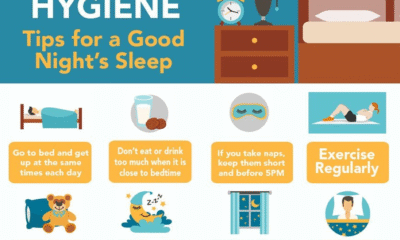NEWS
Arctic Air to Bring First Significant Cold Snap of Season
Introduction
As autumn progresses, meteorologists are forecasting a Arctic air to bring first significant cold snap of the season, driven by an incoming pool of Arctic air. The headline news that the UK is set to experience a marked drop in temperatures this weekend, with the possibility of snow showers over high ground. In this article we’ll break down: what’s happening, why it matters, where snow might fall, how you can prepare — and what it could signal for the coming winter.
What’s happening & why
Cold air masses originating near the Arctic are being drawn southward into mid-latitude regions. In the UK’s case, this incoming air is expected to bring:
-
A noticeable drop in temperatures as colder air replaces the milder air mass
-
A strong northerly wind component, amplifying cold via wind chill.
-
Showers (rain/sleet/snow) focused on windward coasts and hills, particularly over the Scottish highlands above ~400 m.
-
The onset of winter-like conditions much earlier than many expect — effectively a “starter” cold blast before the core winter arrives.
Scientifically, this stems in part from the behavior of the Polar Vortex and atmospheric patterns that allow cold Arctic air to escape the polar regions and plunge south. As one analysis puts it: “a weaker polar vortex can create a disrupted jet stream pattern … enabling cold air to more freely escape into the United States or other mid-latitude regions.” Severe Weather Europe
Where snow is possible
The chances of snowfall from this cold snap are modest — more about wintry showers and sleet than heavy accumulation — but noteworthy places include:
-
The Scottish highlands: Showers may fall as snow above 400 m, with a few centimetres possible on the highest ground
-
Windward coastal hills and moors: Where showers move in from the sea and meet the cold air, snow flurries or sleet may appear.
-
Lower elevations: Less likely to see significant snow, but frost, icy patches and slushy showers are possible.
In short: this is not (yet) the big winter snowstorm, but it is the first sign of wintry conditions and a caution to prepare.
Impacts & why you should care
This cold snap matters for several reasons:
-
Wind chill and cold surprise
Even if thermometer readings don’t plunge into deep negatives, the wind-driven chill will make it feel much colder than the numbers suggest. The Sky News weather producer emphasised this: “This is the first significant cold snap of the season … the biting cold northerly winds are bringing Arctic air, so we’ll all feel cold with a significant wind chill.” -
Travel & outdoor risk
-
Hill roads and passes in the Scottish Highlands may see slush or snow-covered patches, making driving hazardous.
-
Coastal paths and upland areas will feel especially brisk; proper clothing and planning are advisable.
-
Frost overnight may catch pedestrians, cyclists or drivers unprepared.
-
-
Signal for winter ahead
As the Polar Vortex and related atmospheric patterns evolve, this early cold snap could hint at how the rest of the winter will behave. A disrupted vortex often allows more frequent cold incursions. Severe Weather Europe -
Energy / home readiness
-
Homes may feel uncomfortably cold, particularly older or poorly insulated ones.
-
For those in hilly or exposed locations, check heating systems, draughts and the risk of ice on outdoor surfaces.
-
Vulnerable populations (elderly, young children) may need extra care as the cold sets in.
-
What to do to prepare
Here are practical steps you can take:
-
Check your wardrobe: Bring out warmer layers — a good windproof jacket, hat, gloves and possibly a thermal base layer will make a big difference.
-
For vehicles: Check tyre tread and pressure (cold air lowers pressure), ensure windscreen washer fluid is rated for low temperatures, and be alert to possible slippery roads especially in the north.
-
Home readiness:
-
Ensure heating is functioning.
-
Add insulation or use draught excluders, especially if you live in an older home.
-
If you have outdoor taps or pipes, keep them insulated or drained to avoid freezing damage.
-
-
Travel & outdoor plans:
-
If you’re heading into higher ground or exposed terrain (especially in Scotland), check local weather and consider rescheduling if conditions look tricky.
-
For coastal walks or upland hikes, monitor wind gusts and time your outing earlier in the day if possible.
-
-
Stay informed: Listen to local weather updates, especially if you’re in Scotland or upland regions where snow is possible. Even modest snowfall can cause disproportionate disruption.
What this might tell us about winter 2025-26
While it’s too early to forecast the entirety of the coming winter based on this cold snap alone, some meteorological signals are worth watching:
-
The Polar Vortex appears to be weaker or more disrupted than usual, which can support colder and snowier intrusions into mid-latitudes. Severe Weather Europe
-
If this pattern persists, we may see more frequent early-season cold waves, suggesting that winter might arrive earlier and with more impact than some years.
-
However, a single event does not guarantee a harsh winter — many factors (sea surface temperatures, jet stream behavior, solar conditions) will play a role.
Conclusion
The coming weekend’s cold snap — driven by Arctic air plunging south — marks the first real taste of winter for many in the UK. While heavy snow across the lowlands isn’t expected, chilly temperatures, biting wind chill and the chance of wintry showers on high ground make this an event worthy of attention and preparation.

-

 BUSINESS3 weeks ago
BUSINESS3 weeks agoLufanest: Redefining Leadership Through Purpose and Impact
-

 BLOG3 weeks ago
BLOG3 weeks agoMyGreenBucks.net: Proven Path to Financial Freedom
-

 BLOG2 weeks ago
BLOG2 weeks agoAnheihe: Meaning, Origin, and Modern Significance
-

 BLOG2 weeks ago
BLOG2 weeks agoTrulife Distribution Lawsuit: Key Facts, Allegations & Implications
-

 BLOG2 weeks ago
BLOG2 weeks agoCassasse: The Caribbean Dish You Need to Try
-

 BUSINESS2 weeks ago
BUSINESS2 weeks agoSocial Media Marketing Tips for Small Business:
-

 HEALTH2 weeks ago
HEALTH2 weeks agoSleep Hygiene Bio-Hack Rituals: The Science of Better Sleep
-

 BLOG2 weeks ago
BLOG2 weeks agoYearbook 360: The Future of Digital Memories and Student Connections